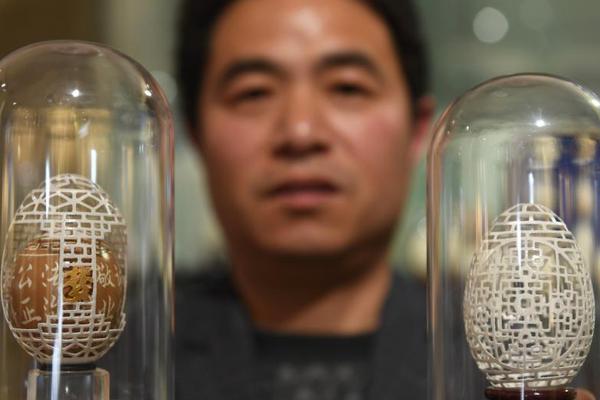
1. Click "System Restore" in the "System Protection" interface. Click Next in the pop-up system restore prompt window. Click to show more restore points, and you can also see the restore points automatically created by the system after the update.
2. Reinstall: Reinstall is to completely clear all data and files on the computer and then reinstall the operating system.All data should be backed up before reinstalling, because reinstalling will clear all data on the hard disk, including personal files, documents, photos, music, etc. It is suitable for problems and major failures of system software and hardware.
3. Step 1, turn on the computer, click the "Start" key, and click the "Settings" option. Step two, after the setting interface pops up, select the "Update and Security" option. Step three, after the new interface pops up, select the "Restore" option on the left. Click the "Start" option to restore this computer.
4. Search Create a restore point from the taskbar and select it from the list of search results. In the "System Protection" tab, select "Create". Enter the description of the restore point, and then select "Create" and "OK" in turn.
1. First of all, we turn on the power Enter the desktop, click the start icon on the left, and then enter the system information. After the search is completed, click the search results. Next, we can find the version of our current system on the system information interface.Then we go back to the start menu and click the setting option.
2. Enter [Recovery Options] 1 in the Windows search bar, and then click [Open] 2. In the project that went back to the previous version of Windows 10, click [Start] 3. If you don't have this project, you may have updated Windows for more than 10 days or you can't do it back due to other operations.
3. Open the "Control Panel". Find "Restore" in the panel and click to open. Click "Open System Restore" on the right to open it. There are two options here. The first is the restore point recommended by the system (that is, the system automatically restores to the state before normal), and the second is to choose a restore point by yourself.
4. [Answer]: WindoWs 10 has its own rollback function. Users only need to click the [Operation Center Icon] in the lower right corner of the Windows 10 desktop and enter [All Settings]. Then select [Update and Security] and [Restore] in turn, and finally click the [Start] button under [Back to Windows 7].
1, click the "Start" button in the lower left corner. 2 Click "Settings" - "Update and Security" - "Restore" - "Reset this computer" - "Start" in order.
2. Click the "Settings" button. Click the "Update and Security" button. Click "Restore" and then select "Reset This Computer".Click "Start". Choose the appropriate option according to your needs.
3. First of all, you can find the settings from the beginning. As shown in Figure 1, click the button at the arrow to open the settings in Figure 2. Keep scrolling down, find the last update button, and click Open. At this time, the interface generally stays on other pages. As shown in the figure below, you need to use recovery here. Find this item, open the page, and you can use the reset function.
4. Click the "Start" button 2 in the lower left corner and click "Settings", "Update and Security", "Restore", "Reset this computer", "Start". If you can't enter the system, you can also try to force the shutdown twice. When it is turned on for the third time, it will automatically enter the Windows RE repair environment 3 According to the individual.
Binance US-APP, download it now, new users will receive a novice gift pack.
1. Click "System Restore" in the "System Protection" interface. Click Next in the pop-up system restore prompt window. Click to show more restore points, and you can also see the restore points automatically created by the system after the update.
2. Reinstall: Reinstall is to completely clear all data and files on the computer and then reinstall the operating system.All data should be backed up before reinstalling, because reinstalling will clear all data on the hard disk, including personal files, documents, photos, music, etc. It is suitable for problems and major failures of system software and hardware.
3. Step 1, turn on the computer, click the "Start" key, and click the "Settings" option. Step two, after the setting interface pops up, select the "Update and Security" option. Step three, after the new interface pops up, select the "Restore" option on the left. Click the "Start" option to restore this computer.
4. Search Create a restore point from the taskbar and select it from the list of search results. In the "System Protection" tab, select "Create". Enter the description of the restore point, and then select "Create" and "OK" in turn.
1. First of all, we turn on the power Enter the desktop, click the start icon on the left, and then enter the system information. After the search is completed, click the search results. Next, we can find the version of our current system on the system information interface.Then we go back to the start menu and click the setting option.
2. Enter [Recovery Options] 1 in the Windows search bar, and then click [Open] 2. In the project that went back to the previous version of Windows 10, click [Start] 3. If you don't have this project, you may have updated Windows for more than 10 days or you can't do it back due to other operations.
3. Open the "Control Panel". Find "Restore" in the panel and click to open. Click "Open System Restore" on the right to open it. There are two options here. The first is the restore point recommended by the system (that is, the system automatically restores to the state before normal), and the second is to choose a restore point by yourself.
4. [Answer]: WindoWs 10 has its own rollback function. Users only need to click the [Operation Center Icon] in the lower right corner of the Windows 10 desktop and enter [All Settings]. Then select [Update and Security] and [Restore] in turn, and finally click the [Start] button under [Back to Windows 7].
1, click the "Start" button in the lower left corner. 2 Click "Settings" - "Update and Security" - "Restore" - "Reset this computer" - "Start" in order.
2. Click the "Settings" button. Click the "Update and Security" button. Click "Restore" and then select "Reset This Computer".Click "Start". Choose the appropriate option according to your needs.
3. First of all, you can find the settings from the beginning. As shown in Figure 1, click the button at the arrow to open the settings in Figure 2. Keep scrolling down, find the last update button, and click Open. At this time, the interface generally stays on other pages. As shown in the figure below, you need to use recovery here. Find this item, open the page, and you can use the reset function.
4. Click the "Start" button 2 in the lower left corner and click "Settings", "Update and Security", "Restore", "Reset this computer", "Start". If you can't enter the system, you can also try to force the shutdown twice. When it is turned on for the third time, it will automatically enter the Windows RE repair environment 3 According to the individual.
Binance Download for PC Windows 10
author: 2025-01-10 18:42 Binance US
Binance US
931.66MB
Check OKX Wallet apk download
OKX Wallet apk download
751.68MB
Check Binance wallet
Binance wallet
635.32MB
Check OKX Wallet app download for Android
OKX Wallet app download for Android
928.94MB
Check Binance wikipedia
Binance wikipedia
818.93MB
Check OKX Wallet Sign up
OKX Wallet Sign up
714.78MB
Check OKX Wallet extension
OKX Wallet extension
274.55MB
Check Binance download Android
Binance download Android
769.82MB
Check Binance US
Binance US
166.49MB
Check Okx app download
Okx app download
671.94MB
Check Binance download Android
Binance download Android
872.24MB
Check OKX Wallet
OKX Wallet
114.41MB
Check OKX app
OKX app
169.75MB
Check Binance app
Binance app
942.43MB
Check OKX Wallet APK
OKX Wallet APK
679.51MB
Check Binance app
Binance app
439.74MB
Check Binance download Android
Binance download Android
257.79MB
Check OKX Wallet
OKX Wallet
247.95MB
Check OKX Wallet to exchange
OKX Wallet to exchange
613.22MB
Check OKX app
OKX app
662.36MB
Check OKX Wallet extension
OKX Wallet extension
188.11MB
Check Binance wallet
Binance wallet
275.56MB
Check Binance US
Binance US
262.62MB
Check Binance Download for PC Windows 10
Binance Download for PC Windows 10
927.56MB
Check Binance login App
Binance login App
156.63MB
Check OKX Wallet login
OKX Wallet login
783.64MB
Check Binance login
Binance login
957.85MB
Check Binance download
Binance download
615.55MB
Check OKX Wallet APK
OKX Wallet APK
548.35MB
Check Binance Download for PC Windows 10
Binance Download for PC Windows 10
888.19MB
Check OKX Wallet Sign up
OKX Wallet Sign up
968.48MB
Check Binance wikipedia
Binance wikipedia
179.83MB
Check Binance US
Binance US
981.47MB
Check OKX Wallet login
OKX Wallet login
435.85MB
Check Binance login
Binance login
287.86MB
Check OKX Wallet app
OKX Wallet app
527.49MB
Check
Scan to install
Binance US to discover more
Netizen comments More
2068 夺胎换骨网
2025-01-10 18:40 recommend
237 手高眼低网
2025-01-10 17:41 recommend
2304 貌离神合网
2025-01-10 17:18 recommend
311 何乐不为网
2025-01-10 16:58 recommend
1274 回船转舵网
2025-01-10 16:07 recommend